 Most viewed Most viewed |

Riverside picnic pavilions71 views
|
|
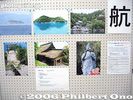
Verse 4 photos (Chikubushima)71 views
|
|

71 views
|
|

Edo-Tokyo Museum71 views
|
|

Tatsunami-beya sumo stable.71 views
|
|
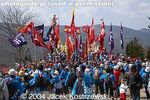
71 views
|
|

71 views
|
|

Crossing the street.71 views
|
|

71 views
|
|

71 views
|
|

71 views
|
|

Irises71 views
|
|

Third panel explaining Verses 5 and 6.71 views
|
|

Hanging on to the strings...71 views
|
|

Pit for offering white stones71 views
|
|

Tied bamboo intersections. The rod-like bamboo are supported by larger pieces of bamboo.71 views
|
|
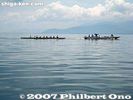
Getting a free ride were these girls heading for Sugaura, a small town on the northern shore of Lake Biwa.71 views
|
|

The bamboo grid was temporarily fixed with weights and some tape.71 views
|
|

Main shrine hall71 views
|
|

Kuhio Beach Torch Lighting & Hula Show71 views
|
|

Inside Takaoka Station passage71 views
|
|

71 views
|
|

Side of Kannon-do main worship hall and autumn leaves71 views
|
|

Room with a irori hearth 茶の間71 views
|
|

Haiden hall 拝殿71 views
|
|

71 views
|
|

Almost departure time71 views
|
|

71 views
|
|

71 views
|
|

Names of yokozuna inscribed on the back of the centerpiece stone.71 views
|
|

Mt. Mikami71 views
|
|

Although the park is designed like a castle grounds with a castle wall and moat, it is not the site of any former castle.71 views
|
|

The shrine has ties to Prince Shotoku Taishi who hid here from an enemy during a war. In appreciation, he donated rice paddies to the shrine.71 views
|
|

Site of the Waki Honjin, used as a secondary Honjin when the Honjin was already occupied. If two daimyo lords were staying in town at the same time, the higher-ranked lord would stay at the Honjin. 脇本陣71 views
|
|

Model of a Toiya-ba which was like a travel logistics office and lodging reservations agency. Staffed by one or more people, it handled horses, messengers, luggage, helpers, etc.71 views
|
|

A toiya-ba staff person keeps records. He might have assigned luggage to fresh horses, gave work to pack-horse pullers, and received arriving travelers and luggage.71 views
|
|

Inside Tokaido Tenmakan Museum. The first floor has a large display case showing a model of Tsuchiyama-juku.71 views
|
|

Tokaido Road at Matsuo-zaka Slope. Travelers from Kyoto might have stood here gazing at the difficult Suzuka Mountains ahead. "It's sunny here, but cloudy at Suzuka. In-between, it's raining in Tsuchiyama." The origin of Suzuka Mago-uta?71 views
|
|

All the dolls have different faces. Some of them are even smiling. They are probably happy to have arrived in Tsuchiyama. They must be tired after climbing the Suzuka mountains.71 views
|
|

Gate of the Honjin, the town's most exclusive lodge. The Honjin is gone, and only the gate remains.71 views
|
|

"Ai no Tsuchiyama" is a phrase you will see most often. But no one knows for sure what it means. There are numerous theories. "Ai" could mean "in-between," "love," "koi fish," or "soon"...71 viewsPhoto of a display panel at the Tsuchiyama Tokaido Tenmakan Museum.
Entire lyrics of Suzuka Mago-uta song in Japanese:
○坂は照る照る 鈴鹿は曇る あいの土山 雨が降る
○馬がもの言うた 鈴鹿の坂で お参宮上﨟(おさん女郎)なら 乗しょと言うた
○坂の下では 大竹小竹 宿がとりたや 小竹屋に
○手綱片手の 浮雲ぐらし 馬の鼻唄 通り雨
○与作思えば 照る日も曇る 関の小万の 涙雨
○関の小万が 亀山通い 月に雪駄が 二十五足
○関の小万の 米かす音は 一里聞こえて 二里ひびく
○馬は戻(い)んだに お主は見えぬ 関の小万が とめたやら
○昔恋しい 鈴鹿を越えりゃ 関の小万の 声がする
○お伊勢七度 おたがわ八度 関の地蔵は 月参り
|
|

Ema tablet71 views
|
|

The stone marker on the right indicates where Emperor Meiji was when he visited here.71 views
|
|

Samegai Museum in a former toiya-ba. 米原市醒井宿資料館 醒井宿問屋場(旧川口家住宅)71 views
|
|

Jizogawa River was also noted for a freshwater fish called hariyo or stickleback. However, researchers have found that the hariyo seems to have become extinct here by May 2010.71 views
|
|

71 views
|
|

71 views
|
|

71 views
|
|

Flute players71 views
|
|

Damudan-ren has an easily-recognizable kimono design pattern. だむだん連71 views
|
|
|

71 views
|
|

Finish line.71 views
|
|

71 views
|
|

Fixed-seat boat race.71 views
|
|

Hokkoku Kaido Road71 views
|
|

How bamboo ribs for Japanese folding fans are made.71 views
|
|

Monument for Adogawa's 300-year fan production.71 views
|
|

71 views
|
|

71 views
|
|

On the first day, Sept. 13, 2008 (Sat.), there is a parade starting from Musashino Hachimangu Shrine at 11 am. It goes down toward the train station. Then later, all the portable shrines around around their own areas.71 views
|
|

71 views
|
|

PR booth for Sento-kun and Nara.71 views
|
|
|

Hiko-nyan did not walk around the road. He only appeared on stage as an "escort" for the mascots being introduced every 15 min. all day.71 views
|
|

71 views
|
|

Mt. Ibuki's summit is easily accessible via this Ibukiyama Driveway toll road (3,000 yen for passenger cars) from Sekigahara, Gifu Pref. This road opened in 1965 and is open to traffic during April to Nov.71 views
|
|

シシウド71 views
|
|

Mt. Ibuki as seen from Hikone.71 views
|
|

71 views
|
|

71 views
|
|

Tokyo Apache merchandise sold in the lobby. Named after the American Indian tribe, the team was established in June 2004 and was one of the inaugural teams of the bj league in Nov. 2005.71 views
|
|

John flies up again.71 views
|
|

Otsu Port and this area is reclaimed land.71 views
|
|

71 views
|
|

71 views
|
|

71 views
|
|

Ogawa Shinya goes for a three-pointer.71 views
|
|

On stage, the oni was rained upon with paper streamers.71 views
|
|

The paper streamers seemed like demon repellant. 71 views
|
|

Next, were 124 bean throwers who were born in the year of the bull. They wore a red cap.71 views
|
|
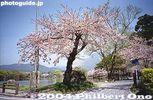
71 views
|
|

There are three classes of spectator seats. At the bottom is open-air seating. Pay 500 yen for the glass-enclosed seating above, and a higher fee for suite rooms higher up.71 views
|
|

Betting ticket counters inside the cycling stadium.71 views
|
|

71 views
|
|

Two cyclists apparently collided and took a spill.71 views
|
|

Wooden bathtub71 views
|
|

Photo of an unusual ax.71 views
|
|
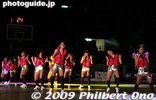
Pregame entertainment by the Tokyo Apache Dance Team (equivalent to cheerleaders). Unfortunately, pro basketball is still a minor sport in Japan. Few people klnow about the bj-league and the teams. Many people in Tokyo have never heard of Tokyo Apache.71 views
|
|

71 views
|
|

71 views
|
|

71 views
|
|

71 views
|
|

71 views
|
|

Kondo Hall corner wood beam71 views
|
|

71 views
|
|

71 views
|
|

71 views
|
|

The building in the background is the Oku no Hosomichi Musubi no chi Memorial Hall.71 views
|
|

New LakeStars cheerleaders are already being recruited from May 2009 for the 2009-10 season.71 views
|
|

Autographs71 views
|
|

Pickled vegetables.71 views
|
|

The Shinto ceremony ended and the shrine priest and co. emerged from the shrine and headed to the stage.71 views
|
|

For the Ogi-no-Mai (Folding Fan Dance), he holds a folding fan and a gohei sacred staff. The Miko-no-Mai, Suzu-no-Mai, and Ogi-no-Mai trio of Chigo-no-Mai dances are also called Sanyaku-no-Mai (三役の舞). 稚児の舞 扇の舞71 views
|
|

Nakaizashi-no-Mai. Although a total of six Chigo-no-Mai dances were performed this year, there are actually more dances which could not be performed due to a lack of dancers. 中居指の舞71 views
|
|

Another part of the museum was a replica of the living room and kitchen in a local farm house.71 views
|
|

Typical stone walls in Sakamoto71 views
|
|

These photos were taken from 5 pm so they look rather dark. If you want brighter photos, go during the day. But then, the festival climax is at night when they gather at the shrine.71 views
|
|

71 views
|
|

71 views
|
|

The boys had these small bells on their back.71 views
|
|

71 views
|
|

Naginata dance 長刀仕舞振り(長刀芸)71 views
|
|

71 views
|
|

71 views
|
|

Nakasendo Tarui-juku. This building, a ryokan, is one of the few remaining from the post town.71 views
|
|

71 views
|
|
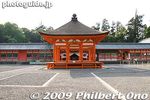
After entering the Romon Gate, you see this Dance Stage. 舞殿71 views
|
|

Hanrinkaku 攀鱗閣(西町)一谷嫩軍記(いちのたにふたばぐんき)71 views
|
|

71 views
|
|

71 views
|
|

71 views
|
|

71 views
|
|

71 views
|
|

71 views
|
|

Baseball coach Nagashima Shigeo and judoist Tamura Ryoko71 views
|
|

Tanabata decoration made of plastic PET bottles.71 views
|
|

Nihombashi subway station 日本橋駅71 views
|
|

Chuo-dori boulevard in Nihonbashi 日本橋 中央通り71 views
|
|

Chuo-dori toward Mitsukoshi Dept. Store71 views
|
|

Monument marking Tokyo's fish market during the Edo Period before it was destroyed by the 1923 earthquake and moved to Tsukiji in 1935.71 views
|
|
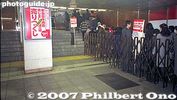
Crowd line up to enter Tokyu Dept. Store in Nihonbashi on Jan. 31, 1999.71 views
|
|

Inside Fuji View Stand.71 views
|
|

Food court71 views
|
|

Kame-no-i Well (Jug Well)71 views
|
|

Meigetsu-in Yagura cavern.71 views
|
|

71 views
|
|

71 views
|
|

71 views
|
|

71 views
|
|

Five hikiyama are parked in the shrine.71 views
|
|

71 views
|
|

71 views
|
|

71 views
|
|

71 views
|
|

71 views
|
|

71 views
|
|

71 views
|
|

Kondo Hall carvings71 views
|
|
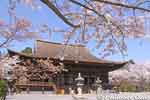
Kondo Hall and cherry blossoms.71 views
|
|

On the right of the Kancho-do is the three-story pagoda (Sanju-no-to). It was moved from Fushimi Castle in Kyoto in 1601 by Tokugawa Ieyasu. Important Cultural Property. 三重塔71 views
|
|

71 views
|
|

Kondo Hall carvings71 views
|
|

Zeze Castle was built in 1601 upon the order of Tokugawa Ieyasu after he won the Battle of Sekigahara in 1600. He dismantled Otsu Castle and assigned Zeze Castle as a guard for the Tokaido Road.71 views
|
|

First we heard taiko drum beating and they entered the shrine at around 8:30 pm.71 views
|
|

Unfortuntaely, the smoke blew in front of the design so we could hardly see it.71 views
|
|

71 views
|
|

Door to Principal's office71 views
|
|

71 views
|
|

Most tourists traveling between Tokyo and Kyoto barely notice Mt. Ibuki and Lake Biwa along the way.71 views
|
|

71 views
|
|

Earth Balloon HOME. Lit up at night and floats up by 20 meters.71 views
|
|

71 views
|
|

71 views
|
|

71 views
|
|

The Kanko Maru was built in 1987 in Holland.71 views
|
|

On top deck.71 views
|
|

Below deck on the Kanko Maru. This deck was air-conditioned.71 views
|
|

71 views
|
|

71 views
|
|

On the first day, the dancing is held from 6 pm to 9 pm. (Opening ceremony at 5:30 pm.) On the second day, it is from 6 pm to 8:40 pm.71 views
|
|

三鷹飛粋連71 views
|
|

71 views
|
|

71 views
|
|

Happy Road, the main venue of the Kita-Urawa Awa Odori. It is a short route.71 views
|
|

Moat on right side of Ninomaru Higashi Otemon Gate.71 views
|
|

Moat next to South Gate.71 views
|
|

71 views
|
|

Pregame entertainment by the Hannaryz cheerleaders.71 views
|
|

Bobby Nash #33 goes for 3 points.71 views
|
|

Kawabe Taizo #1171 views
|
|

71 views
|
|

Fujiwara Takamichi for a free throw.71 views
|
|

Bobby Nash #33 goes for 3 points.71 views
|
|

Iwasa Jun wants the ball from Fujiwara.71 views
|
|

Reda71 views
|
|

71 views
|
|

Another worn out monument on Shizugatake.71 views
|
|

71 views
|
|

71 views
|
|

Inside Kishiwada Castle tower is a modern museum.71 views
|
|
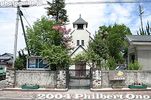
Imazu Church, designed by William Merrell Vories. This is next to the former bank building. MAP71 views
|
|

Looking toward Nyotai from Miyukigahara.71 views
|
|

71 views
|
|

Around the cable car station below the mountain, the fall leaves were very nice.71 views
|
|

71 views
|
|

71 views
|
|

Shimogamo Shrine torii71 views
|
|

On Jan. 4, Kemari hajime at Shimogamo Shrine starts at 1:30 pm. Free seating is provided, but getting there early assures you of a better view if you want to take pictures.71 views
|
|

The game is preceded by a ceremony. 71 views
|
|

71 views
|
|

71 views
|
|

Mac user?71 views
|
|

Torii island71 views
|
|

71 views
|
|

Kangun-zuka Memorial. During the Boshin War between the forces of the shogun and Emperor Meiji, a ship carrying the Kumamoto clan to Hakodate's Goryokaku fortress sank off this shore. This memorial is for the 135 people who died on the ship. 官軍塚71 views
|
|

71 views
|
|

"Home Run" is the title of this display. Obvious reference to Tokyo Dome's baseball diamond and to the word "ran" which means orchid.71 views
|
|

Mikoshi portable shrines serve as this design's motif.71 views
|
|

Thailand71 views
|
|

Lots of sloping roads in hilly Atami.71 views
|
|

Ferries go to Hatsushima and Oshima islands.71 views
|
|

71 views
|
|

These are kid dancers from a local dance school called avex Dance Master Human Academy.71 views
|
|

After the player is introduced, they walked down the cheerleader gauntlet.71 views
|
|

Cohey and Wara71 views
|
|

Tokyo Apache huddle.71 views
|
|

Kawase Junior and Senior High School band.71 views
|
|

71 views
|
|

71 views
|
|

71 views
|
|

Dragon dance71 views
|
|

71 views
|
|
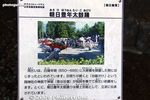
About the Asahi Honen Taiko Odori. It originated in the latter 7th century in Ohara village when they started to cultivate new farming land. It was a rainmaking dance. Now held in Oct. in Maibara.71 views
|
|

Kyoto Tower as seen from the open-air roof of Porta shopping mall.71 views
|
|

71 views
|
|

There are about 190 cherry trees along this road.71 views
|
|

71 views
|
|

If there's something you have to see here, it's this building.71 views
|
|

Aoni-yoshi Parade is a great photo op.71 views
|
|

Model of the Imperial Domicile.71 views
|
|

71 views
|
|

71 views
|
|

Flowers in spring.71 views
|
|

71 views
|
|

There are several large mikoshi carried by men. All the mikoshi and taiko drums have a name.71 views
|
|

71 views
|
|

71 views
|
|

71 views
|
|

71 views
|
|

71 views
|
|

The main thoroughfare lined with gingko trees which turn color in autumn.71 views
|
|

Panel display showing the history of the campus.71 views
|
|
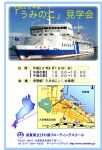
About once a year, the old Uminoko was open to the public for free while moored at Otsu Port. You could freely go inside and look at most of the rooms. I went on Aug. 18, 2010. This is the flyer for the tour called Kengakukai.71 views
|
|

Sleeping quarters are on the 1st floor. This room is for 20 girls. They sleep on the floor. There are 12 rooms similar to this one. A total of 240 kids can thus be accommodated.71 views
|
|
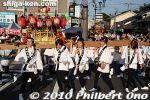
71 views
|
|
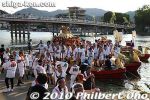
71 views
|
|

Map of Rakujuen Garden. Mishima Station is at the top. Japanese garden and villa formerly owned by Prince Komatsu Akihito in the late 19th century. The city of Mishima eventually bought the property in 1954 and opened it as a public garden. 楽寿園71 views
|
|
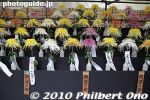
71 views
|
|
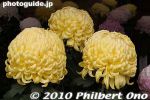
71 views
|
|
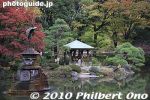
71 views
|
|
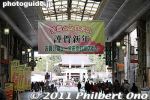
After you exit Honmachi arcade, you see Masumida Shrine across the street.71 views
|
|
| 71415 files on 284 page(s) |
 |
 |
144 |  |
 |
|